Bicycle Frame Size Calculator & Chart
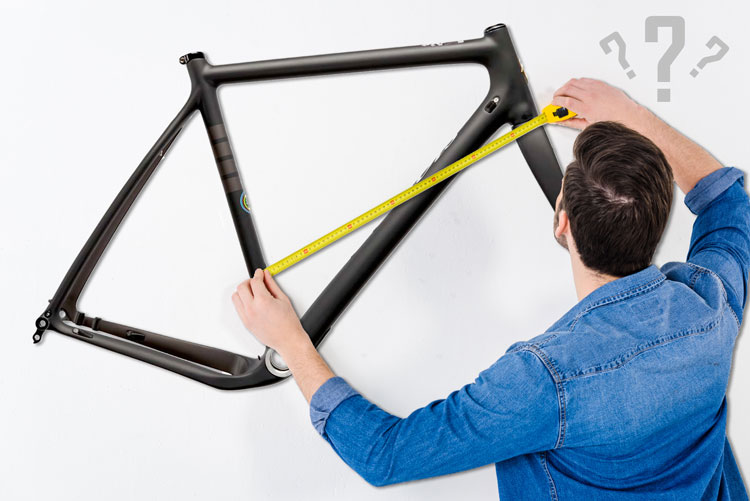
Getting the right bike frame size is the most important factor when it comes to maximizing your comfort and performance on the bike. Luckily, bike sizing is easy.
There are a few different ways to find the right frame size for your height, and the two we recommend include using a bike size calculator and a bike size chart.
What Size Bike Do I Need?
To determine the size of a bike you need, you should measure your height and leg inseam and compare those measurements to some kind of a bike sizing chart or enter them in an online calculator (like the one on this page).
Different types of bikes, such as Road, Mountain, BMX, and Kids use different frame sizes, so it’s important to consult specific sizing charts or calculators for each bike type.
Let’s take the first step below!
How to Measure Your Inseam Length?
To find out your ideal bike size, you first need to know your exact height and inseam length (leg length).
Measuring your height is pretty straightforward, but it can be tricky to measure your inseam properly if you don’t know what you’re doing.
Simply speaking, your inseam length is the distance from the floor to your crotch. Follow these steps to measure it:
- Stand barefoot close to a wall with your feet 6″ – 8″ apart.
- Place a large book between your legs and keep the top edge parallel to the ground.
- Take a measuring tape and measure the distance from the ground to the top of the book.
Voila! Now use that number to find your ideal bike frame size with one of the two methods below.
1. Bike Size Calculator
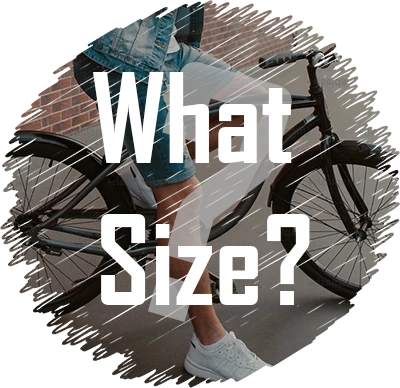
Our online bike size calculator below is a handy tool that helps you figure out the right bike size for you.
Start by choosing the type of bicycle you are interested in and entering details like your height and inseam length.
The calculator then processes this data and tells you which bike size might be a good fit based on seat tube length and also recommends the right crank length. For kids’ bikes, all you need to enter is the kids’ age and the calculator will recommend the right wheel size.
Think of it as a helpful starting point, but it’s always a good idea to compare the results to a bike size chart to confirm the right fit.
Start by choosing your preferred type of bicycle below!
Choose a bicycle type:
Road Bike
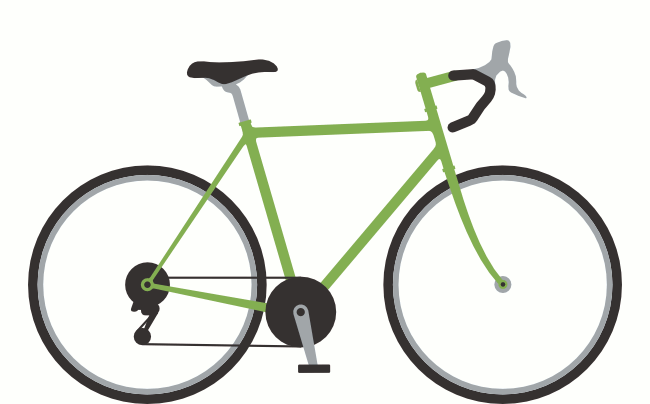
Road bikes, designed for paved surfaces, are ideal for road riding, racing, touring and commuting.
Mountain Bike
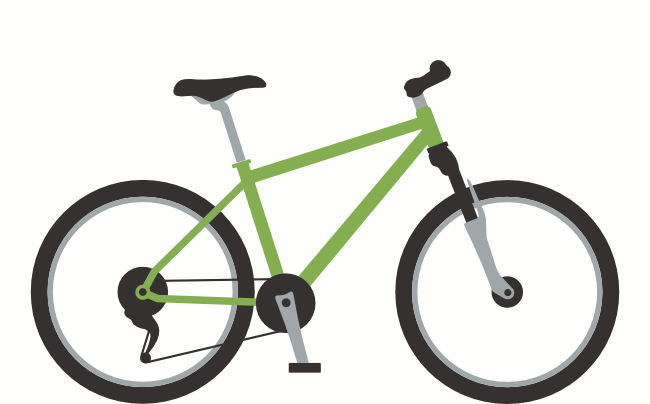
Mountain bikes are designed for off-road riding on rough terrain such as dirt, mud, gravel, roots and rocks.
BMX Bike
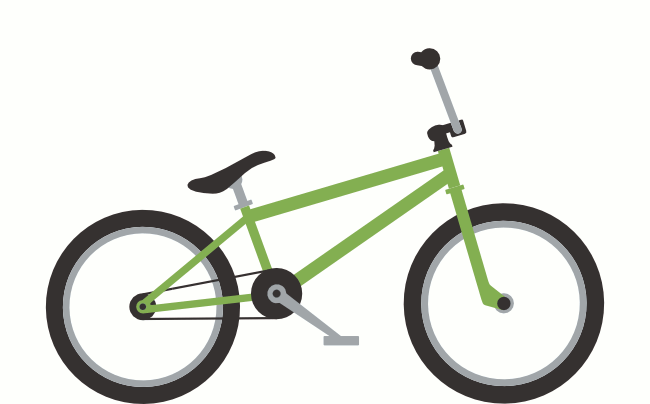
BMX bikes are designed for racing, jumping and freestyle riding on dirt tracks, ramps and in skate parks.
Kids Bike
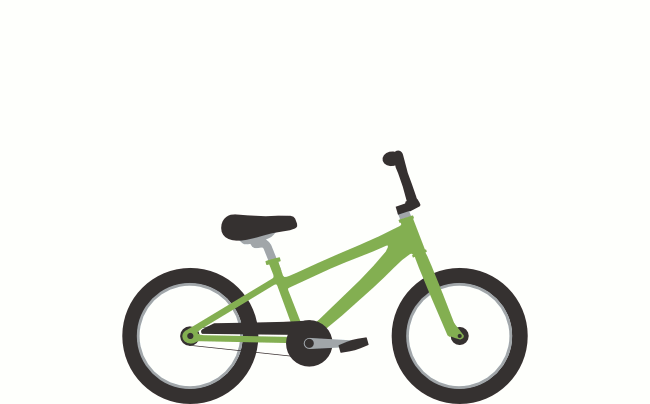
Kids bikes have smaller frames and wheels and are designed to help children learn to ride.
2. Bike Size Charts
Bike size charts are simple guides that help you find the right-sized bike based on your height and/or inseam length.
By matching your body measurements with the info on the chart, you can easily find the bike size that's ideal for you.
Here's a simple bike size chart in inches and centimeters (cm) that's a great starting point:
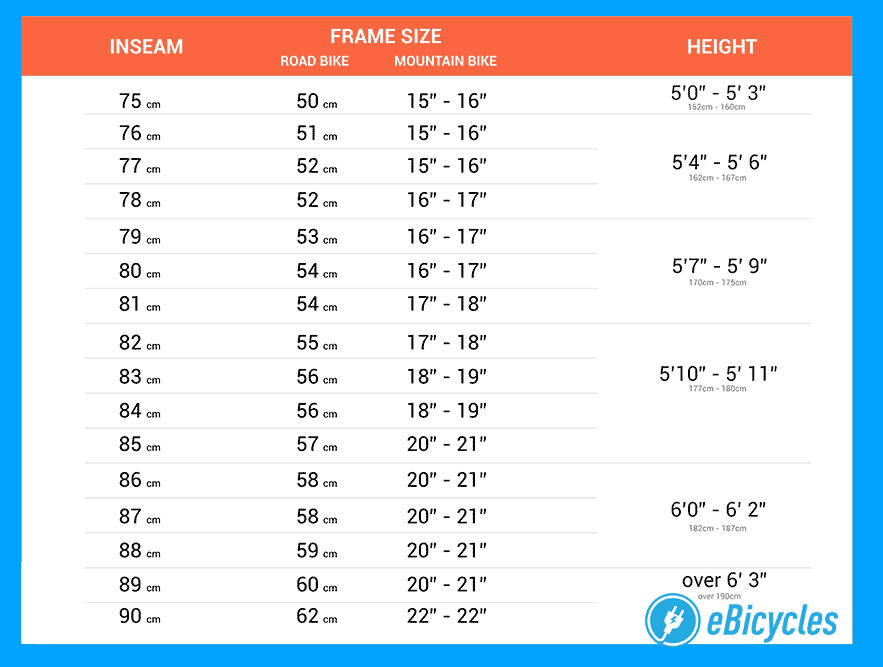
What If You're Between Two Bike Sizes?
Choosing the correct bike frame size is pretty straightforward unless you fall right between two bike sizes. What should you do then?
The choice between the smaller and the bigger size boils down to a few factors:
- Riding style
- Preferred riding posture
- Body proportions
If you're choosing a mountain bike frame size, consider getting a smaller size if you value precise handling and agility, as you'll have more control. A bigger frame size translates to a longer bike geometry, which is better for going straight over obstacles.
Frame size also affects the riding posture, so get the smaller size if you are not very flexible and you want to be in a more upright position. Otherwise, get the larger size if you think you can maintain a more stretched-out position, which can be challenging on longer rides.
Body proportions matter as well and differ greatly among people. If you have a short torso and long legs, a smaller frame with a shorter reach is a better choice. Conversely, a larger frame is a better choice for riders with a long torso and shorter legs, as long as the standover height is right and you're not touching the top tube.
In most cases, choosing the smaller size is the better option as it's always much easier to adjust the fit of a smaller frame than a bigger frame. You can do this by using a longer step, wider handlebars, and adjusting the saddle height and handlebar height.
Should You Test Ride a Bike Before Buying?
Test-riding a bike before buying is not always necessary to get the correct bike frame size. This is especially true if your old bike fits well, which you can use to compare your next bike to and get a similar fit.
If you're inexperienced or you're buying your first bike, test riding is a good idea, but still not necessary if you measure your inseam and height precisely and consult the manufacturer's size chart or a reliable online calculator and bike size chart.
However, test riding a bike can provide several other benefits, so don't skip it if there is a local bike shop in your area that provides this service.
After testing a few bikes, you can get a better feel for the comfort and personal fit, ride feel, and size ranges that feel the best. After that, you can still order online if the price is better than in a brick-and-mortar store.
Frequently Asked Questions
1. What Size Bicycle Is Right for My Height?
The right size bicycle for your height depends on your body measurements, but your height is not the only factor you should consider. To get the right size, you should also measure your inseam length and choose the best size based on those two numbers.
2. How to Choose the Right Bike Size?
To choose the right bike size, you should measure your height and inseam length and then use an online calculator (like the one on this page) or a bike size chart to cross-reference your measurements. This method will provide you with a good starting point to choose the right frame size.
3. Can I use my inseam to choose a bike size?
Yes, you can and should use your inseam to choose the right bike size. However, this should not be the only measurement to rely on, as your total height is an important factor as well. Therefore, you should use a combination of these two numbers together with an online calculator or a size chart.
4. How does bike size affect performance and comfort?
The bike size you choose for your bike has an immense effect on performance and comfort. A poorly sized bike will feel uncomfortable and alien to your body, and will not allow you to use the full potential of your physical strength and performance.
5. Do all brands use the same size charts for bikes?
No, most bicycle brands use proprietary size charts for their bikes, based on their own measurements. While these can be similar, there are usually important differences that prohibit riders from using just one chart for all brands. It's best to consider the size chart of the brand you are planning to purchase from.
If you want more info and a more detailed frame size recommendation, then:
- See an in-depth Road Bike Size Calculator and Chart here.
- See an in-depth Mountain Bike Size Calculator and Chart here.
- See an in-depth BMX Bike Size Calculator and Chart here.
- See an in-depth Kids' Bike Size Calculator and Chart here.
The calculators on the pages linked above will provide you with more detailed recommendations after entering measurements like height and inseam length.
With that info, you should have everything you need to get the right fit and enjoy your new bike free of pains, aches, and discomfort!
Your Feedback is Important!